Discover how to grow and care for Jasmine plants indoors with our comprehensive 2024 guide. Learn expert tips on light, water, soil, and pruning to enjoy year-round fragrant blooms in your home. Perfect for beginners and seasoned plant enthusiasts alike.
Growing jasmine plants indoors brings a touch of exotic beauty and intoxicating fragrance to your home environment. With proper care, these versatile plants can thrive year-round, offering cascades of delicate flowers and glossy foliage. This comprehensive guide will walk you through everything you need to know about cultivating jasmine indoors, from selection to ongoing care.
As a horticulturist specializing in indoor tropical plants for over two decades, I’m excited to share my expertise on nurturing these fragrant beauties in your home. Let’s dive into the world of indoor jasmine cultivation!
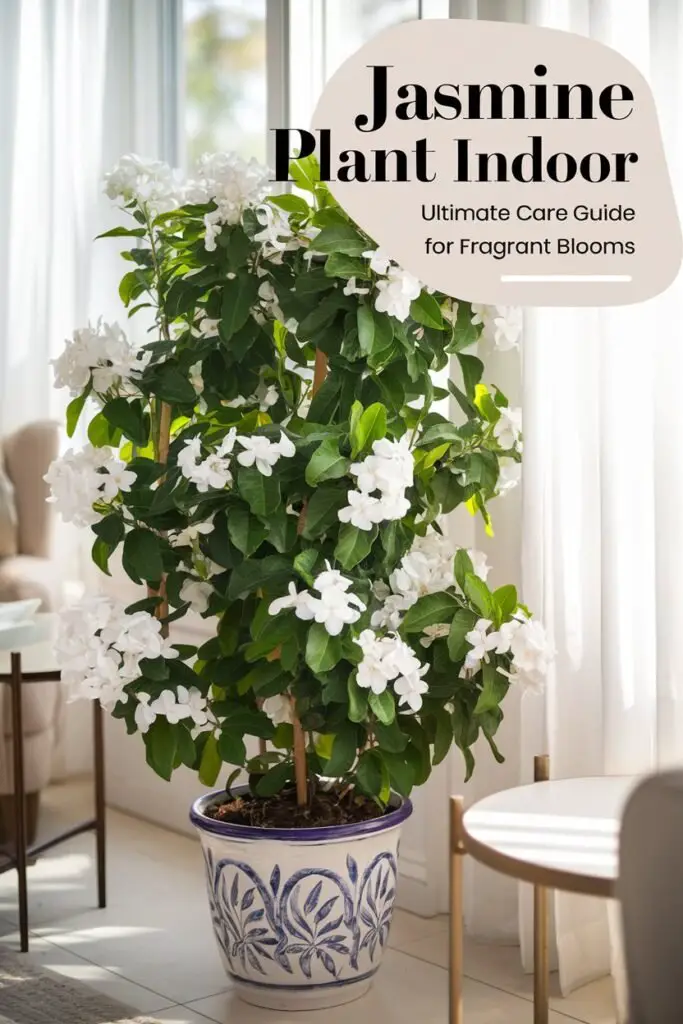
Why Choose Jasmine as an Indoor Plant?
Before we delve into care instructions, let’s consider the benefits of growing jasmine indoors:
- Natural air freshener with its sweet, intoxicating scent
- Purifies indoor air by removing toxins
- Adds a touch of elegance and tropical flair to any room
- Some varieties bloom year-round with proper care
- Can be trained to grow as a vine or compact bush
Now, let’s explore how to successfully grow jasmine indoors.
Choosing the Right Jasmine Variety for Indoors
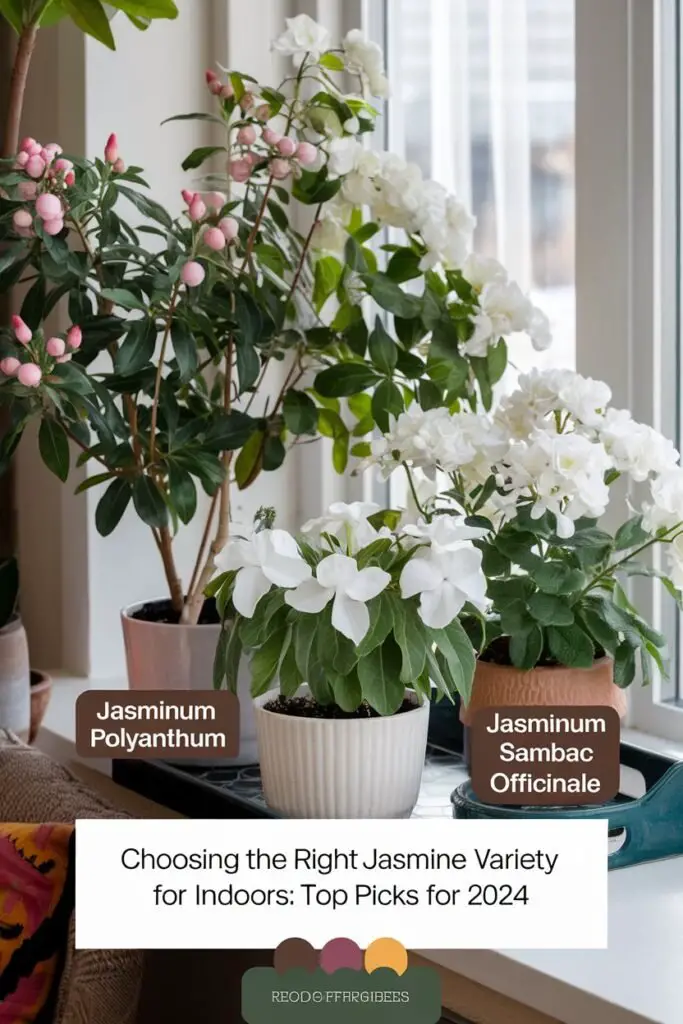
Why It’s Important: Not all jasmine varieties are suitable for indoor growth.
Best Indoor Varieties:
- Jasminum polyanthum (Pink Jasmine)
- Jasminum sambac (Arabian Jasmine)
- Jasminum officinale (Common Jasmine)
2024 Trend: New compact jasmine cultivars bred specifically for small spaces and indoor growth are gaining popularity.
Pro Tip: Choose a variety based on your space and light conditions. Pink Jasmine is great for bright spots, while Arabian Jasmine can tolerate slightly lower light.
Providing Proper Light
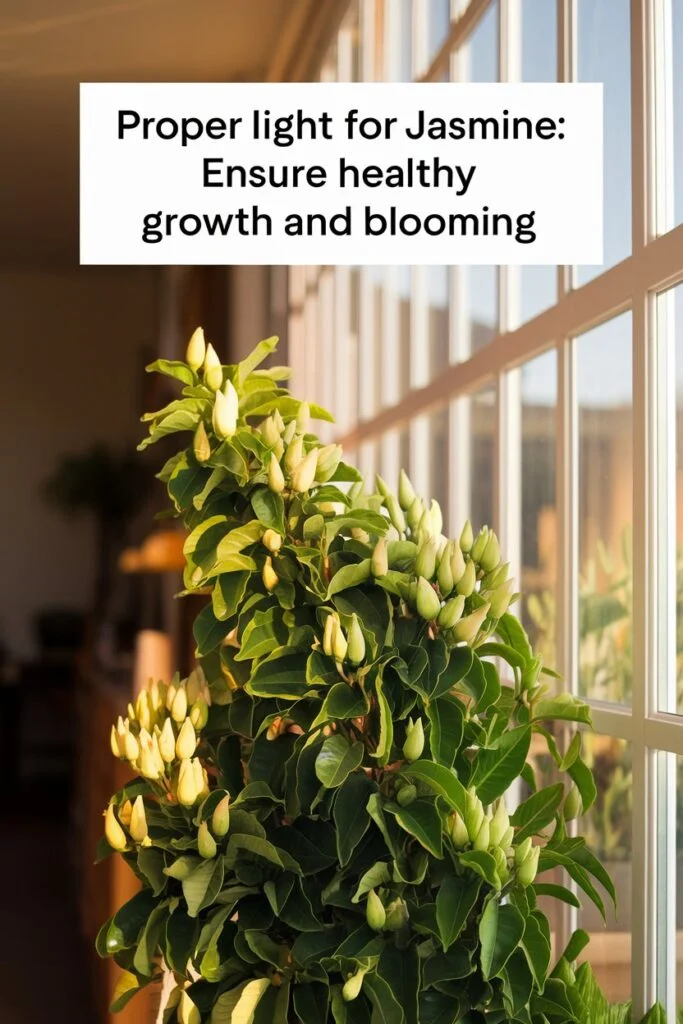
Why It’s Important: Adequate light is crucial for healthy growth and abundant blooming.
How to Do It:
- Place jasmine in a bright location with indirect sunlight.
- South or west-facing windows are ideal.
- Provide 6-8 hours of bright light daily.
2024 Innovation: Advanced LED grow lights designed to mimic natural sunlight are making it easier to grow jasmine in low-light homes.
Pro Tip: Rotate the plant quarterly to ensure even growth on all sides.
Watering Your Indoor Jasmine
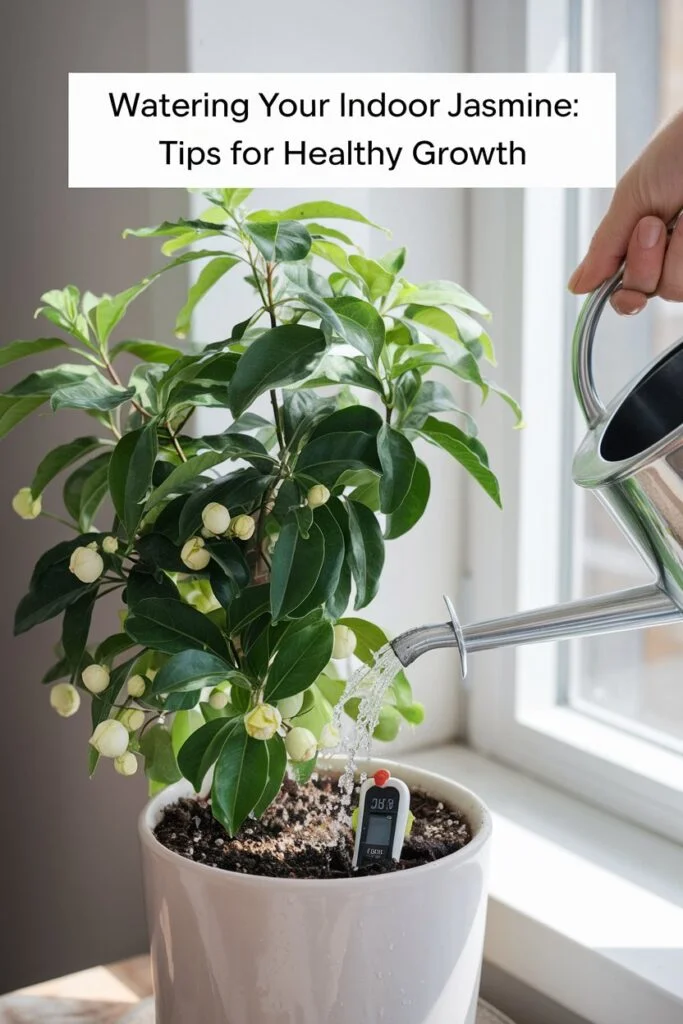
Why It’s Important: Proper watering prevents root rot and ensures healthy growth.
How to Do It:
- Keep soil consistently moist but not waterlogged.
- Water when the top inch of soil feels dry.
- Reduce watering slightly in winter.
2024 Update: New self-watering planters with built-in moisture sensors are simplifying indoor jasmine care.
Pro Tip: Use room temperature water to avoid shocking the plant’s roots.
Soil and Fertilization
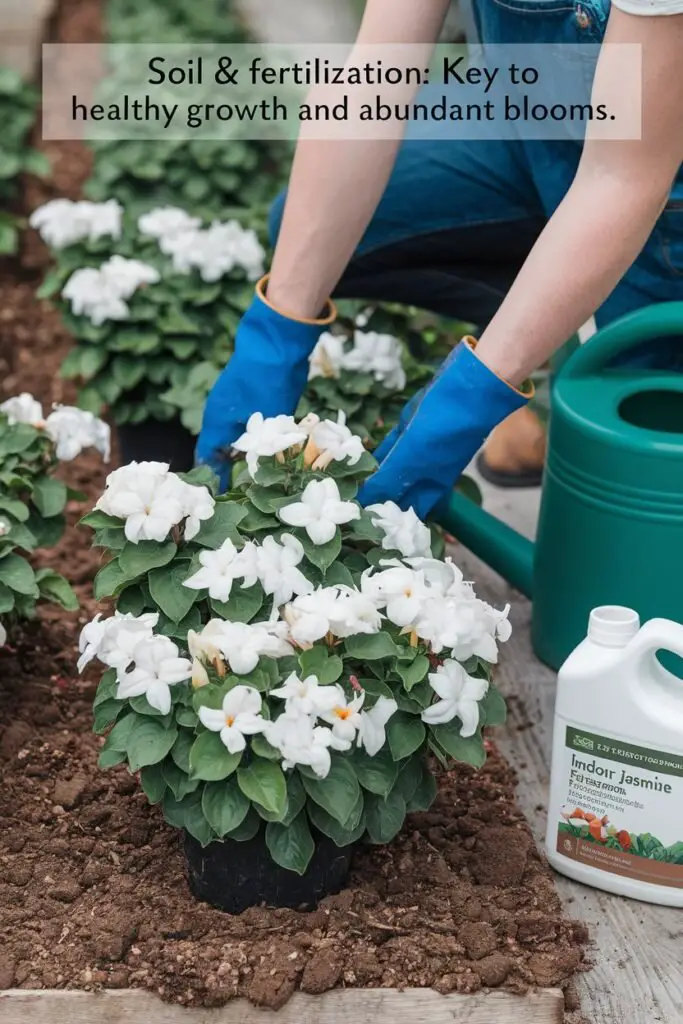
Why It’s Important: Proper soil and nutrients promote healthy growth and abundant blooming.
How to Do It:
- Use well-draining, slightly acidic potting mix.
- Fertilize monthly during growing season with a balanced, water-soluble fertilizer.
- Reduce fertilization in winter.
2024 Trend: Organic, sustainably sourced potting mixes specialized for flowering indoor plants are becoming increasingly popular.
Pro Tip: Add perlite or coarse sand to improve drainage if using standard potting soil.
Temperature and Humidity
Why It’s Important: Jasmine thrives in conditions similar to its native tropical habitat.
How to Do It:
- Maintain temperatures between 60-75°F (15-24°C).
- Provide humidity levels of 50-60%.
- Use a pebble tray or humidifier to increase humidity if needed.
2024 Innovation: Smart home systems that automatically adjust room temperature and humidity for optimal plant growth are on the rise.
Pro Tip: Mist the leaves regularly to increase humidity and keep them clean.
Pruning and Training
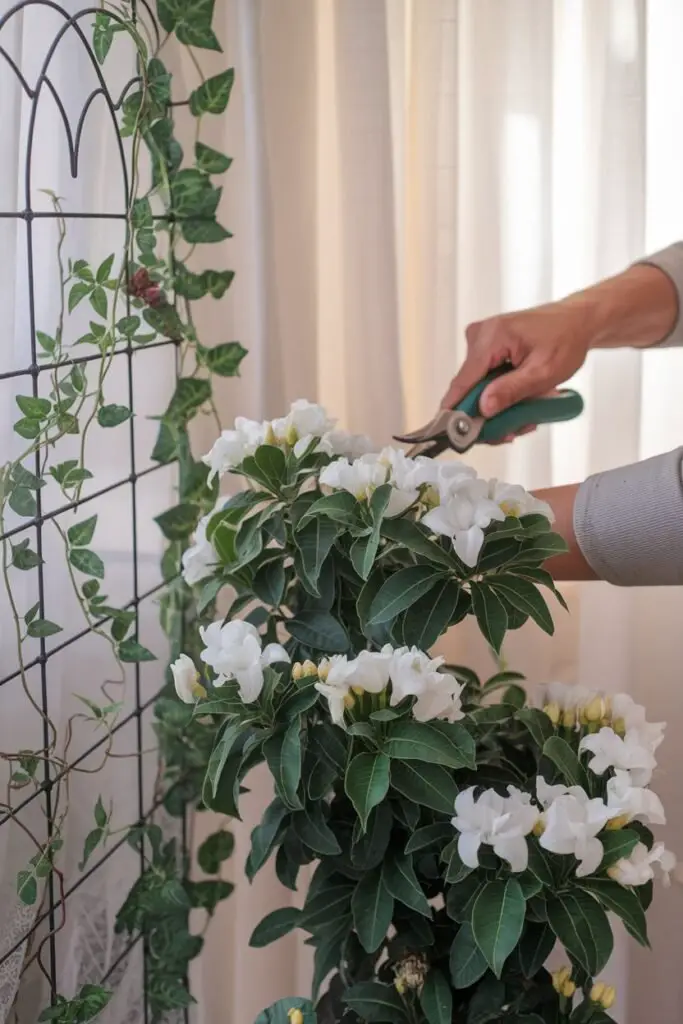
Why It’s Important: Regular pruning promotes bushier growth and more blooms.
How to Do It:
- Prune after flowering to maintain shape and size.
- Pinch off growing tips to encourage branching.
- Train vining varieties on a trellis or hoop.
2024 Trend: Aesthetic pruning techniques to create living sculptures with jasmine plants are gaining popularity in interior design.
Pro Tip: Sanitize pruning tools with rubbing alcohol before and after use to prevent disease spread.
Pest and Disease Management
Why It’s Important: Early detection and treatment prevent major infestations and plant damage.
Common Issues:
- Spider mites
- Mealybugs
- Root rot
How to Manage:
- Regularly inspect plants for signs of pests or disease.
- Use neem oil or insecticidal soap for pest control.
- Ensure proper drainage and avoid overwatering to prevent root rot.
2024 Update: Biological pest control methods using beneficial insects are becoming more accessible for indoor gardeners.
Pro Tip: Isolate new plants for a week before introducing them to your indoor garden to prevent pest spread.
Encouraging Blooms
Why It’s Important: Proper care and conditions are necessary for abundant flowering.
How to Do It:
- Ensure adequate light exposure.
- Maintain slightly cooler nighttime temperatures (around 5°F cooler than daytime).
- Provide a period of rest in winter with reduced watering and fertilization.
2024 Research: Studies on phytohormones are leading to new, natural bloom-boosting products for indoor plants.
Pro Tip: Gently shake or brush your hand across the plant daily to mimic wind and encourage pollination.
Best Practices for Indoor Jasmine Care
To ensure the best results with your indoor jasmine:
- Choose a consistent location away from drafts and heat sources.
- Use a pot with adequate drainage holes.
- Repot every 2-3 years or when roots become pot-bound.
- Clean leaves regularly to remove dust and improve photosynthesis.
- Consider using rainwater or distilled water if your tap water is hard.
Embracing the Beauty of Indoor Jasmine
Growing jasmine indoors allows you to enjoy its enchanting fragrance and delicate blooms year-round. With proper care and attention to its needs, your indoor jasmine can become a stunning focal point in your home, purifying the air and lifting your spirits with its sweet scent.
Remember, every plant is unique, and it may take some time to find the perfect balance of care for your specific jasmine and indoor environment. Don’t be discouraged if you face some challenges – with patience and persistence, you’ll soon be rewarded with a thriving, fragrant indoor jasmine plant.
For more information on indoor gardening and plant care, visit resources like the Royal Horticultural Society or your local botanical garden. Happy growing, and may your home be filled with the sweet scent of jasmine!
For more gardening tips and plant care guides, visit usagardenhub.com

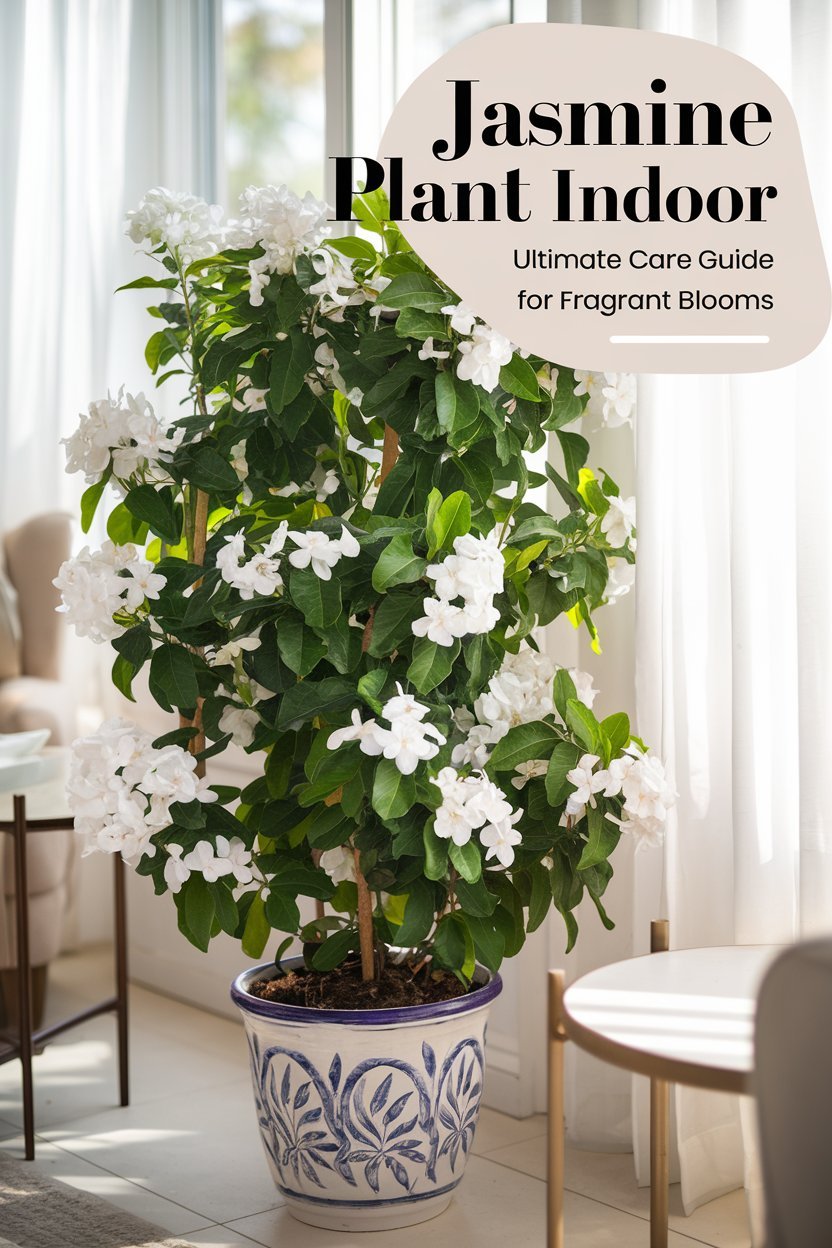



2 Comments on “Jasmine Plant Indoor: Ultimate Care Guide for Fragrant Blooms”